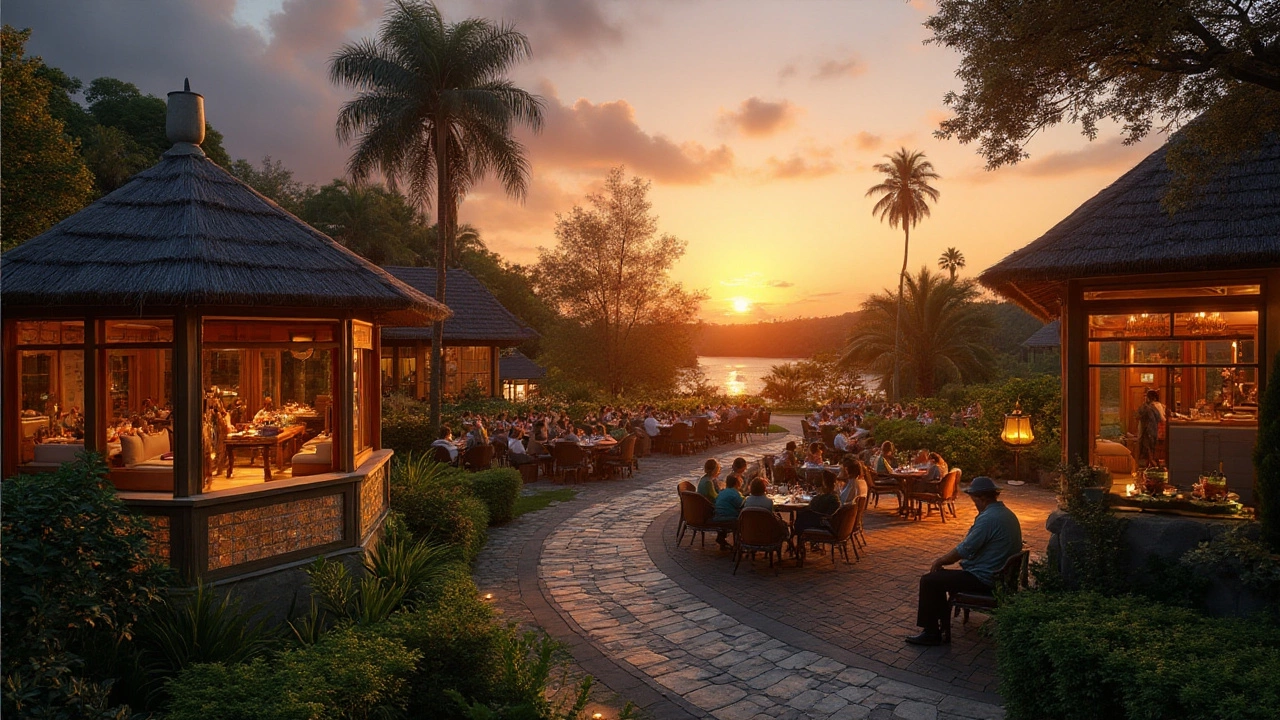Food Availability at Welcoming Yards Retreat – Your Practical Guide
Planning a getaway and wondering what you’ll actually eat? You’re not alone. Whether you book a cosy cottage, a glamping tent, or an all‑inclusive hotel, the food situation can change a lot. Below you’ll find a straight‑forward rundown of what’s typically on offer, how to handle special diets, and where to snag fresh local produce.
Self‑Catering and Cottage Meals
Most of our country cottages and holiday homes come with a fully equipped kitchen. That means you can cook whatever you like, from a simple scrambled‑egg breakfast to a Sunday roast with locally sourced veg. The trick is to check the listing for basic appliances – a fridge, stove and oven are standard, but some tiny cabins only have a hot plate.
If you’re not a chef, don’t panic. Many villages near our retreats have small grocery shops that stock fresh bread, cheese, fruit and even ready‑made meals. You can pop in for a quick shop on the first day, then stock up for the rest of your stay. Look for “farm‑shop” signs on Google Maps – they usually carry seasonal produce you won’t find in a big supermarket.
For dietary needs, most self‑catering spots give you the freedom to bring your own supplies. Gluten‑free flour, dairy alternatives or vegan protein powders can be packed in your luggage. If you’re traveling light, consider ordering a delivery from a nearby store the day before you arrive. Many UK retailers now offer same‑day delivery to rural postcodes.
All‑Inclusive and On‑Site Dining
When you choose an all‑inclusive resort, meals are generally covered in the price. Breakfast is often a buffet with hot and cold options, lunch might be a la carte, and dinner can range from themed nights to simple grills. Alcoholic drinks are usually included in the “premium” packages, but basic wine and beer are often part of the standard deal.
Check the resort’s website for a sample menu before you book. Some places cater to specific diets – they’ll label gluten‑free, vegetarian or vegan dishes. If you have a food allergy, give the resort a heads‑up when you reserve; most will note it on your record and inform the kitchen staff.
Even at all‑inclusive sites, you’ll find on‑site cafés or snack bars that sell extra items for a fee. If you’re watching your budget, stick to the main meals and skip the minibar. For a taste of the local flavour, ask the concierge about nearby pubs or farmers’ markets that you can visit during a free evening.
Glamping sites sit somewhere in between. Some glamping tents come with private bathroom and kitchenette, letting you cook your own food. Others offer communal BBQ areas or a small restaurant that serves simple dishes like grilled fish or salads. When booking, look for keywords such as “ensuite glamping” or “on‑site dining” in the description – they give a clear hint of what to expect.
Finally, a quick tip for all types of stays: pack a few non‑perishable snacks – nuts, granola bars or dried fruit. Rural locations can have limited late‑night options, and a handy snack saves you from a frantic search for a 24‑hour shop.
Bottom line: no matter where you stay with Welcoming Yards Retreat, you’ll have enough food choices to keep your stomach happy. Check the property details, plan a quick grocery run if you’re self‑catering, and let the staff know about any special diet. With a bit of prep, you can focus on the scenery, not the menu.
